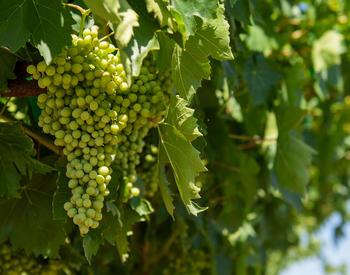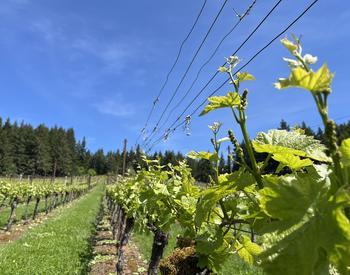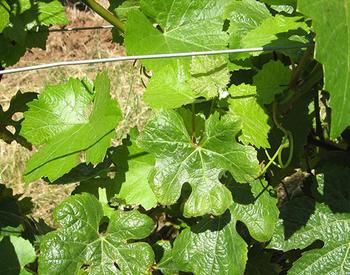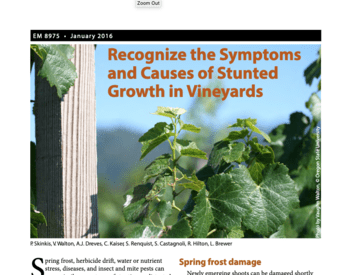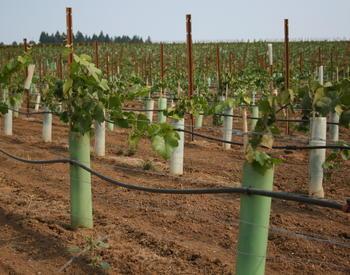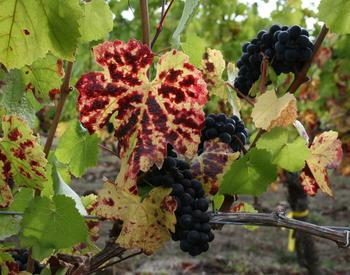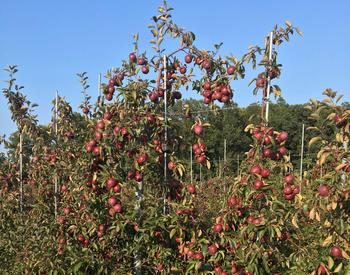Grape growers develop vineyard spray and management programs to prevent powdery mildew from infecting their vineyards by adhering to preventative fungicide applications and timely canopy management.
Most summers in western Oregon provide excellent conditions for vigorous vine growth and powdery mildew infections. Many growers are nervous about finding even a little powdery mildew on their grape clusters during the summer, as it can destroy fruit and wine quality. However, what can be done if an infection occurs? I recommend a three-step “spa” treatment:
- Pamper your grapes with a refreshing water bath.
- Followed by a soothing mineral oil treatment.
- And a complete cover.
The rescue treatment described below works best if applied earlier in the season (before véraison). It may not work well or be worth your effort with vineyards close to or already beginning véraison or after. It is possible for a few new infections to occur post-véraison.
All powdery mildew treatments are meant to protect healthy grapes rather than “cure” already existing infections. After implementing these treatments, you may still see the development of new powdery mildew colonies, but those arise from microscopic infections that have already occurred. More importantly, once berries are damaged by powdery mildew, they remain damaged (have necrotic scarring) that will remain, no matter what you do (Figure 1).
Step 1: Water Bath
Start with a high volume application of water (200 to 400 gallons/acre) plus a wetting agent (surfactant). It sounds ridiculous to use this much water; however, this treatment works by washing off all the spores from the grapevine and preventing them from being dispersed to healthy parts of the grapevine.
Powdery mildew conidia lyse (break up) when in free water. It is critical that you get good coverage of the entire vine, especially the clusters. This treatment only buys you a day or two since new conidia will develop rapidly.
Step 2: Mineral oil application
Horticultural mineral oils will denature the fungus since most of its mycelia reside on the outside of grape tissues. Apply a 1–2% oil treatment to the vines within two days of the water application.
In general, petroleum-based oils work better than plant-based oils. Thorough spray coverage is essential for good results. Forget using bicarbonate products; they do not work when the powdery mildew pressure is very high.
If you use a lot of sulfur in your spray program, be sure to follow labeled intervals to avoid plant burn. See this PNW Handbook article for more information about horticultural oils.
Step 3: Complete cover
Follow the oil treatment in five to seven days with a strong fungicide of your choice. Attend to the details of spray application and product selection. Again, good coverage is needed, so slow down your tractor speed and spray all portions of the vine thoroughly.
Fungicide product selection may be difficult. You should use a material that has a low resistance risk such as a horticultural mineral oil or elemental sulfur (group UN or previously M2). Many of the other materials, such as those in fungicide groups 3, 7, or 11 have a high risk that powdery mildew will become resistant to the chemicals and/or have already developed resistance in the region.
Using these product classes under a powdery mildew epidemic could more rapidly select for resistance if it has not already developed. Therefore, select a fungicide that you have not been using this year or within the last year or two. Fungicide ratings and group numbers can be found in our Pest Management Guide for Wine Grapes in Oregon.
Prevention is the key
The best powdery mildew management plan is to attend to details before and during the spray season, especially during the transition into and during bloom. Prevention is the key because when powdery mildew gets a foothold in your vineyard, it is very difficult to manage.
However, even the best vineyards can have a little mildew infestation when conditions are ideal for vine growth and powdery mildew infection. A rescue like this is a last-ditch effort and not to be relied upon.

